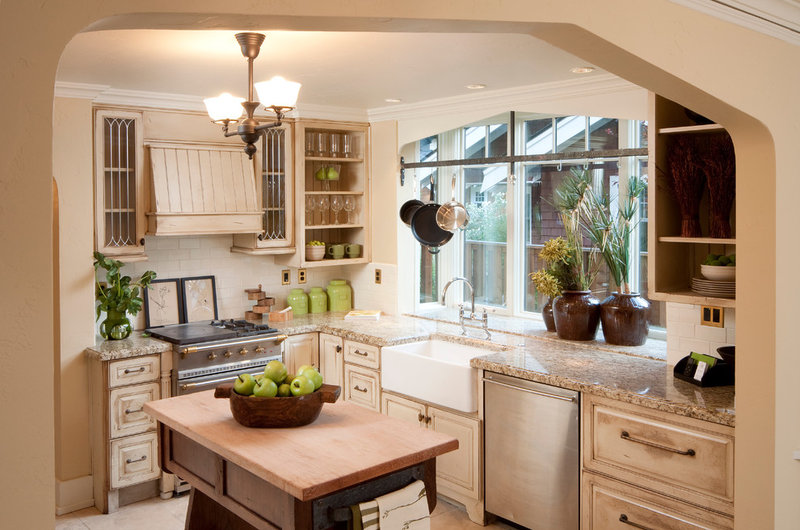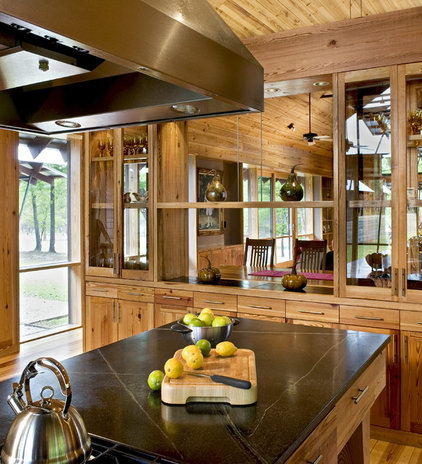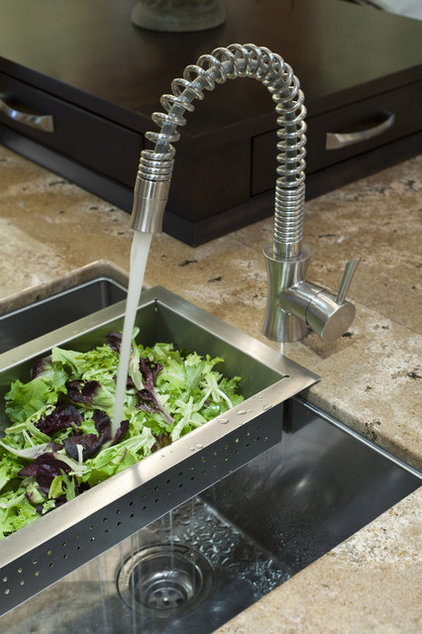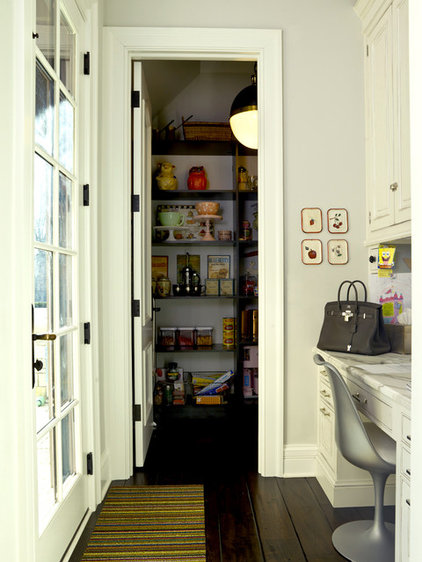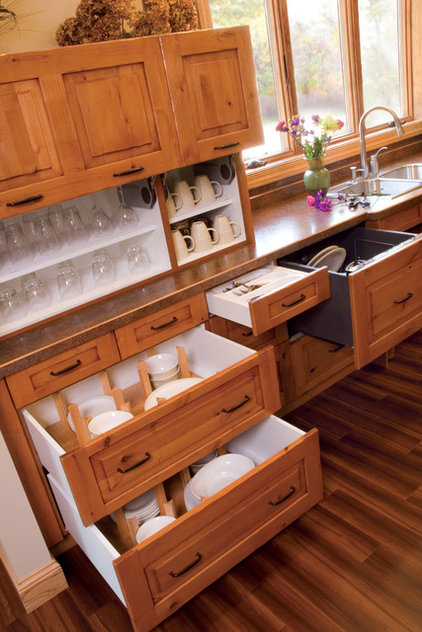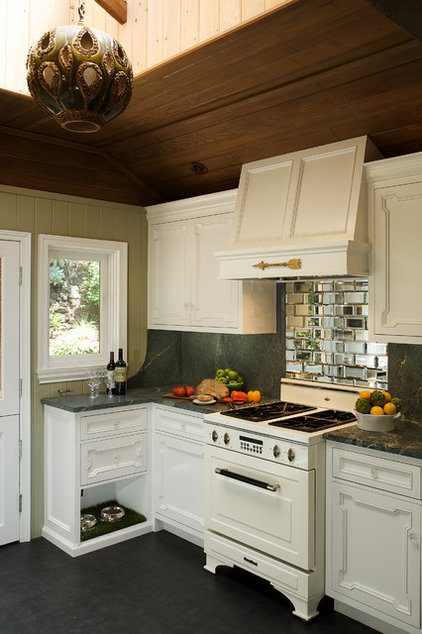
Updated: Fri, 22 Aug 2014 09:00:00 GMT | By Mark Anderson

Project 1
If life can be described as an endless cycle of decay and renewal, the same can be said for houses. The decay part happens when the windows start leaking, the doors no longer fit right, the drywall bulges, the carpet disintegrates, the tiles crack, the fence falls down-you get the picture.
The renewal part? That's you fixing everything broken, tainted, tarnished, outmoded, outdated, or out-of-kilter. The question, as always, is whether to attempt to do the work yourself, or bring in experts to do it for you. It's a deceptively difficult question to answer, and it's one you're going to want to get right.
The first and most obvious reason to tackle your own home renovations is money: you can save thousands of dollars on many home improvement projects by handling the labour yourself. Before you start hammering apart the bathroom tiles or clawing up the carpet, however, there are a few additional things to consider. First off, are you physically up to the challenge? Drywall is heavy; sinking fence posts in solid clay can feel like a labour of Hercules. And you, who sit in a cubicle all day tapping away at a keyboard, are you fit enough for long days in the construction game? You'd better be sure before you pick up that hammer.
Self-knowledge is even more important. Robert Koci, publisher of Canadian Contractor magazine, points to the executive who pulls in $500,000 a year but still does his own home renovations because he enjoys the challenge and change of pace. "There's something eminently satisfying about working with materials instead of people," says Koci, who's spent his life in and around the building trades. "Materials don't lie. Materials are subject to understandable laws that don't change. For some people, that's a welcome diversion from managing people for a living."
The converse, of course, is that inexperience and a lack of professional-calibre tools can quickly drive one to screaming fits of frustration. "Do-it-yourself challenges who you are and what you're about," says Koci. "If you're impatient, disorganized or easily stressed, DIY might not be for you. If you're the kind of person who enjoys learning and is intrigued by new experiences, yes, DIY is definitely for you."
Some jobs, of course, are harder than others. "Start small," suggests Koci. "Choose projects you think you can handle. Work your way in gently, and build up to bigger, more complex renos."
And what exactly are these small, easily undertaken DIY renos that can save you big bucks over hiring a contractor? Some of the most common include installing a hardwood floor, trimming a room with baseboard and crown moulding, tiling a bathroom, hanging drywall and building a wooden yard fence. Each involves unique skill sets, tools and materials, as well as cost savings versus hiring a contractor. Best of all, they're projects a typical homeowner can undertake with limited experience, and still be proud of the results.
Installing a hardwood floor
When RBC account manager Dale Conrod moved into a 30-year-old townhouse with his young family a few years ago, he knew he had some reno work ahead of him, especially when it came to the flooring. "We had old, ugly carpets throughout the living room and dining room, and the choice was to replace the carpet or go with something a little nicer," he recalls. "We decided to go with hardwood, and since my wife had a co-worker whose husband was really handy and volunteered to help me, I decided we could do the installation ourselves."
A good call, because as he soon discovered it really wasn't that hard. "We went to Rona, looked around, and they had red oak on sale for $6.25 a square foot, so we went with it." The hardwood came pre-varnished and pre-cut into various lengths from one to four feet, with tongue and groove joints for easy installation. "It fit together like a jigsaw puzzle," he says. "Once you put your first line down it really goes very quickly. One guy throws the boards down, the other uses the nailer, and you just start trucking along. When you get to the end of a row you make a cut with the circular saw so it's flush against the wall, and then you start on the next row."
The key to making it look good, he says, is to pre-sort the wood by length and grain. "Some of the boards have a lot of straight grain and some have kind of a swirly grain, so you want to mix it up so you have the different grains throughout the floor. Also, you have to vary the lengths so your joints are staggered instead of lining up."
The last row usually has to be ripped to make it fit snug against the wall, which is where the table saw comes in. Since Conrod already owned a table saw, he was all set. "Otherwise I probably would have tried to borrow one from a buddy, or rent, because there's no point buying such an expensive piece of equipment for one job."
Working steadily, the two men were able to finish four rooms-kitchen, living room, dining room and hallway-in a single weekend, saving more than $2,000 in labour versus having the work contracted out. So, would he do it all again? "Probably not," laughs Conrod. "We have more money now, and I'm a bit older and lazier. But at the time it was definitely the right decision."
DON'T MESS THIS UP! Especially during the dry winter months, you don't want to make the mistake of installing your floor immediately upon delivery. "Leave it for a couple weeks to let it get to the same level of heat and humidity as the rest of the house," advises Conrod. "If you don't it'll shrink and you're going to get gaps."
Install hardwood floors in three rooms and a hallway (total 700 sq ft)
- Hardwood flooring: $4,375
- Compressor, nail gun, nails: $200
- Table saw (rental): $100
- Total: $4,675
- Contractor price: $6,855
- Save: $2,180
- Circular saw/chop saw: $100
- Tape measure: $25

Project 2
Crown moulding and trim
Of all the renovations you can undertake, nothing beautifies a home quicker and easier than crown moulding and baseboard trim, says Chris Dore, a long-time contractor, woodworker and installer with Ottawa Community Housing. "It makes an immediate impact on the look and resale value of a home, and it's something most homeowners who are reasonably handy should be able to do themselves."
The key to a great-looking job, he says, is matching the size of the moulding to the height of the room. "For a standard eight-ft ceiling you can go with a four-inch wide crown. Anything lower you can drop down to three or 3.5 inches, and for high, cathedral ceilings you can use the largest crown available."
Moulding can be purchased at big-box stores like Rona and Home Depot at pre-cut lengths of up to 16 feet, or by the linear foot from custom wood shops. "Buying by the linear foot is usually better because you're almost guaranteed less waste, and can also avoid having to make extra joints halfway along a run," says Dore.
There are also a variety of materials from which to choose, from MDF, or medium density fiberboard, to pine, to beautiful hardwoods like oak or cherry. Of these, the hardwoods are the most expensive and least forgiving to work with, in part because you can't cover your mistakes. "Say you have a fancy library room and you want to trim it in solid cherry or oak," says Dore. "The material costs triple, and if you cut a 12-ft piece a quarter-inch short and you're using a clear finish it's very difficult to disguise that, whereas if you're painting a piece of pine or MDF you can hide those joints with caulking and paint."
Once you've decided on a material, the installation is pretty straightforward. You'll need a good quality compound mitre saw and either a compressor and brad nailer, or one of the new butane-powered nailers on the market. "Butane guns are better because you can shoot about 1,000 nails with a single canister, and you're not dragging a compressor hose around," says Dore.
Measure your pieces carefully and use the miter to make perfect 45-degree cuts for the corners. Glue both sides of any joint and nail the rest of the run to the wall. With a little practice you should be able to install lengths of up to eight feet by yourself; longer runs are better installed with a helper. "Get your family to help," suggests Dore. "Anyone can hold up a piece of wood." Then caulk the top and bottom to cover any gaps in an undulating wall or ceiling, paint (unless you're using hardwood) and you're done.
DON'T MESS THIS UP! Hardwood should be limited to rooms with relatively level ceilings and flush walls. "If your ceiling or walls are out of alignment you might want to go with a material like MDF, which you can bend and manipulate a little," says Dore. "If you're using a solid-wood material like a big piece of oak, you're not going to be able to bend that even an eighth of an inch. Stick it up and it will just highlight how bad your walls and ceiling are."
Install crown moulding and trim in four rooms (12 x 12 ft each)
- 200 linear feet of 4-inch $600pine moulding
- Compressor, nail gun, nails: $200
- Compound mitre saw: $150
- Four-foot level: $30
- Caulk: $20
- Total: $1,000
- Contractor price: $1,700
- Save: $700
- Tape measure: $25
- Set square: $20
Project 3
Tiling a bathroom
Working with wood is one thing, but what about tile? Surely tiling is too intricate and fiddly for the average homeowner…or is it? Dale Hollingsworth, a professional garage door installer and all-around handyman, says that despite misgivings on the part of some homeowners, there's no reason to fear the square, ceramic stuff. To date Hollingsworth has tiled a pair of bathrooms-the first in his Ottawa home, the second in his country home on Sharbot Lake near Kingston, Ont.-and each time the job has turned out beautifully, while saving him a bundle on labour.
One of the keys, he says, is buying tiles that are easy to work with. "Smaller tiles come in one-ft sheets held together by plastic or fibreglass backing, so they're pre-spaced and held in a perfect square. If you're going with larger, three- to six-inch tiles, buy the ones with protruding edges on them so when you push them together they're automatically spaced. It avoids the use of those little plastic spacers, and it's a real time-saver."
Once you've decided on the tiles you want to install, mix your mortar (cement) and apply it to the wall with a special v-groove trowel. "Cement these days is extremely bondable," says Hollingsworth. "It holds the tiles in place even on a vertical wall, and they won't sag or anything. Just push them against the cement and you're done. It's fairly quick."
When you get to the edges and corners you may have to cut tiles to make them fit: use a special tile saw, otherwise known as a wet saw, to prevent chipping or cracking. Wait a day for the cement to dry, then apply your grout with a rubber tile float, making sure you fill the joints completely.
Wait an hour or so until the grout sets a bit, then clean off the excess, first with the tile float and then with a damp grout sponge. "Start by cleaning the joints, and then go over the face of the tiles to get the fog off. If you do it at the right time and with the right amount of water, it goes easily."
DON'T MESS THIS UP! Cleaning grout can be tricky, because you have to let it set long enough to become firm, but not so hard that you can't remove the excess with a grout sponge. "Timing is critical, and it all depends on the temperature and humidity levels in the house," says Hollingsworth. "If it's really warm out, it'll dry fast, and once it hardens it's extremely difficult to remove. You have to scrub and scrub. It's horrible."
Tile a three-wall bath and shower stall (total 100 sq ft)
- Tile: $500
- Cement: $15
- Grout: $15
- Tile saw (rental”): $40
- Tile float: $5
- Grout sponge: $5
- V-trowel: $10
- Total: $590
- Contractor: $1,090 price
- Save: $500
- Tape measure: $25
Project 4
Drywall a room
Whether you're finishing a basement, subdividing a room or repairing water damage, hanging drywall is one of the most common home reno jobs, and one most homeowners should be able to handle themselves. Both Chris Dore and Dale Hollingsworth recently drywalled basement rooms in their respective homes, and pass on the following tips.
"If you're not used to lifting heavy materials, consider purchasing lightweight drywall," says Hollingsworth. "It's made with Styrofoam beads and reduces the weight of the sheets by about a third, making them easier to work with."
Start by laying the drywall on the floor and marking the location of the joists with a pencil. Then hold the sheets up and screw them to the joists starting at the top of the wall and with the long end of the panel parallel to the floor, using an 18-volt cordless drill and inch-and-a-quarter drywall screws. "Make sure you set the clutch on the drill so the screws stop just below the surface of the drywall and don't go too deep," says Hollingsworth.
Centre the short end of the panels on the joists so you have something to attach the next panel to, and keep going until you've covered the wall. When you have to cut panels to make them fit, use a utility knife to score the paper on one side, snap the sheet in two, and then turn the sheet over and cut the other side of the paper. "Whatever you do, don't cut into the drywall with your knife or you won't get a nice clean break," says Dore. "Just score the paper and the drywall will snap off nice and straight. Use a sharp blade, and be careful. A lot of people cut themselves drywalling."
Once you get your sheets up you have to tape and "mud" the joints with drywall compound. Both Dore and Hollingsworth say they prefer the more expensive but stronger fibreglass tape to paper tape, which can bubble. "I've seen many, many taped joints that have little wobbles and air pockets in them," says Dore. "That doesn't happen with the fibreglass tape."
The taping and mudding of the joints is the most tedious part of drywalling. Start by applying a thin layer of mud to the joints, then press the strips of paper or fibreglass tape into the damp compound. Let it dry, then apply a second layer about eight inches wide, and finally third layer about 20 inches wide, sanding after each application.
"The key is to apply the first layer of mud extremely thin, just enough to wet the tape and hold it in place," says Hollingsworth. "Put it on too thick, and you create hours of extra and unnecessary work sanding."
DON'T MESS THIS UP! Never put joints above doors or windows, says Dore. "If you do, the joints are almost guaranteed to crack because of movement over time and changes in temperature and humidity. Instead, use a whole piece of drywall and cut it so it fits around the doors and windows."
Drywall one room (total 12 x 12 ft)
- Drywall: $192
- Fibreglass tape: $20
- Mud: $100
- Trowel: $20
- Pole sander: $30
- Drywall screws: $6
- Four-foot level: $30
- Drywall saw: $20
- Utility knife: $10
- Total: $428
- Contractor price: $1,600
- Save: $1,172
- Cordless drill:$150
- Tape measure: $25

Project 5
Building a fence
Perhaps the easiest job-and the one that will potentially save you the most money versus hiring a contractor -is building and installing a wooden yard fence. "Deck and fence contractors are specialists, and hence have a relatively high markup for their work," says Koci. "At the same time, because the tolerances are much greater for outdoor fence work -a quarter of an inch, say, versus a 32nd of an inch for crown moulding-it's something homeowners can do even if they're not that precise with their measurements and cuts."
Chris Dore has installed several fences over the years including, most recently, one for his parents. "You really only have two choices of material," he explains, "cedar or pressure-treated wood, with PT being a little cheaper and offering longer life."
Start by sinking post holes three or four feet deep at either end of your fence run using a rented post-hole bore, and shovel a couple inches of gravel in the bottom of each to aid drainage. Drop the posts in the centre and fill the holes with concrete, using shims and a level to ensure the posts are perfectly straight. Run a string line between the posts and sink the rest of your holes along the line at eight-ft intervals; these middle holes can be backfilled with tamped earth instead of concrete to save money.
Use a cordless drill and inch-long screws to centre a pair of galvanized mounting brackets on each post, top and bottom, at the desired heights. "You can't use regular screws or they'll rust," Dore warns. "You have to use special screws designed for either pressure-treated wood or cedar."
Drop your top and bottom two-by-fours into the mounting brackets between the posts, and the skeleton of your fence is done. All that remains is to add the vertical slats, or pickets: most people stagger the pickets on either side of the two-by-fours.
Use a chalk line and circular saw to cut the top of the posts off at the desired height, nail decorative caps over each for protection, and you're done.
DON'T MESS THIS UP! The ground is never perfectly even, and you never want your fence touching the ground at any point, so measure from the highest point in the yard when installing your bottom brackets and two-by-fours. Keep the ground around the fence free of weeds, bushes and plants. "Any plant material touching the fence will shorten its lifespan by half," warns Dore. "The moisture will rot the wood out over time."
Build a 60-ft fence
- 8 12-ft PT 4 x 4 posts: $118
- 14 8-ft PT 2 x 4 boards: $75
- 28 8-ft PT 1 x 1 mouldings: $30
- 110 6-ft PT 1 x 6 planks: $165
- 8 post caps: $80
- 28 galvanized hanging brackets: $10
- PT screws: $10
- Concrete: $40
- Post-hole auger (rental): $20
- Compressor, nail gun, nails: $200
- Chalk line: $10
- Total: $758
- Contractor price: $2,980
- Save: $2,222
- Circular saw: $100
- Cordless drill: $100
- Level: $30
- Tape measure: $25
Additional DIY reno instructions and resources
More stories from MoneySense




 Subscribe with RSS Reader
Subscribe with RSS Reader


